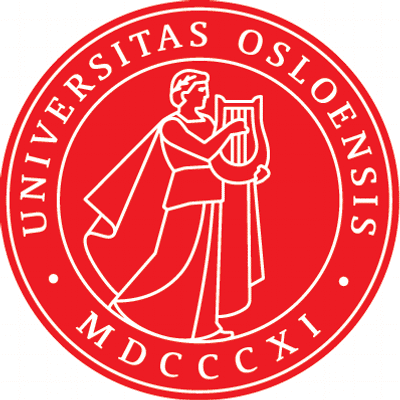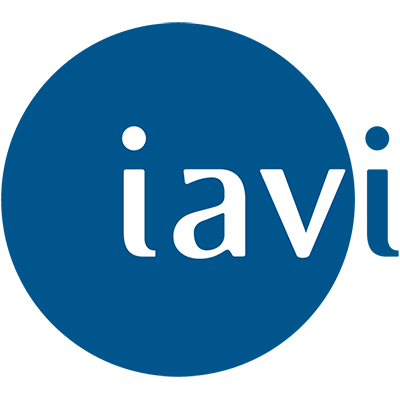预约演示
更新于:2025-12-07

University of Oslo
更新于:2025-12-07
概览
标签
肿瘤
皮肤和肌肉骨骼疾病
泌尿生殖系统疾病
小分子化药
TCR-T细胞疗法
治疗性疫苗
疾病领域得分
一眼洞穿机构专注的疾病领域
暂无数据
技术平台
公司药物应用最多的技术
暂无数据
靶点
公司最常开发的靶点
暂无数据
| 排名前五的药物类型 | 数量 |
|---|---|
| 小分子化药 | 3 |
| 治疗性疫苗 | 2 |
| TCR-T细胞疗法 | 2 |
| 抗体偶联核素 | 1 |
| 抗体 | 1 |
关联
11
项与 University of Oslo 相关的药物作用机制 PRAME抑制剂 [+1] |
在研适应症 |
非在研适应症 |
最高研发阶段临床2期 |
首次获批国家/地区- |
首次获批日期- |
靶点 |
作用机制 CCR1拮抗剂 |
在研适应症 |
非在研适应症- |
最高研发阶段临床前 |
首次获批国家/地区- |
首次获批日期- |
靶点- |
作用机制- |
在研适应症 |
非在研适应症- |
最高研发阶段临床前 |
首次获批国家/地区- |
首次获批日期- |
520
项与 University of Oslo 相关的临床试验NCT07175545
Enhancing Medication Adherence With Mobili®: A Crossover Randomized Controlled Trial in Portuguese Community Pharmacies
Medication adherence is one of the biggest challenges faced by healthcare systems, especially among people with multiple chronic diseases who take several medications daily. Studies show that up to half of patients do not take their medication as prescribed, which can compromise treatment effectiveness, increase complications, and lead to waste of healthcare resources.
In this context, several solutions have been developed to help patients organize their therapy, such as dose administration aids (DAAs) used in pharmacies. However, many of these systems are manual, inflexible, or difficult to use.
This study is part of the MobiMAd@PT project, which will evaluate Mobili®, a portable digital medication dispenser developed in Norway. Mobili® allows patients to automatically receive the right medication at the right time and comes with a real-time monitoring system, enabling healthcare professionals to detect missed doses and provide timely support.
The main goal of this study is to assess the effectiveness of Mobili® in improving medication adherence among patients with polypharmacy in Portugal and to understand whether this type of technology can be useful and applicable in the context of Portuguese community pharmacies. Your participation will contribute to the development of new ways to manage health at home, with the support of pharmacists and technology.
In this context, several solutions have been developed to help patients organize their therapy, such as dose administration aids (DAAs) used in pharmacies. However, many of these systems are manual, inflexible, or difficult to use.
This study is part of the MobiMAd@PT project, which will evaluate Mobili®, a portable digital medication dispenser developed in Norway. Mobili® allows patients to automatically receive the right medication at the right time and comes with a real-time monitoring system, enabling healthcare professionals to detect missed doses and provide timely support.
The main goal of this study is to assess the effectiveness of Mobili® in improving medication adherence among patients with polypharmacy in Portugal and to understand whether this type of technology can be useful and applicable in the context of Portuguese community pharmacies. Your participation will contribute to the development of new ways to manage health at home, with the support of pharmacists and technology.
开始日期2025-10-15 |
申办/合作机构 Medthings AS [+2] |
NCT07135115
Targeting Lifestyle to Improve Colorectal Cancer Screening
The goal of this study is to learn whether receiving personalized, digital lifestyle advice during colorectal cancer screening leeds to changes in lifestyle over a two-year follow-up period. Changes will be measured using a composite score including diet, alcohol consumption, physical activity, body mass index and smoking habits. The main questions it aims to answer are:
* Do participants who receive short, personalized digital feedback on their lifestyle - either once or through repeated rounds -change their lifestyle during the two-year study period, compared to those who do not receive any feedback?
* Does the inclusion of additional contact, such as telephone consultation with healthcare providers, result in further lifestyle changes?
Researchers will compare three groups which receive digital feedback at different intensities and a control group which does not get any feedback to see if lifestyle changes differ between the groups.
Participants in four different groups will fill in a digital diet and lifestyle questionnaire at the start of the study and 2-4 times after this during the following 2 years.
* Participants in three of the groups will receive a short digital feedback report on their lifestyle related to health recommendations after each completion of the questionnaire.
* One of these groups will also be offered to go through the feedback report together with a healthcare provider in a telephone call.
* This group will also receive invitations to motivational webinars every half year during the 2-year study period. The topics in the webinars address cancer preventive lifestyle.
A secondary goal of the study is to understand whether the invitation to fill in the diet and lifestyle questionnaire affects participation in colorectal cancer screening. Therefore, a fifth group of individuals invited to colorectal cancer screening but not to be invited to fill in the questionnaire will be included for extra comparison. Participation in colorectal cancer screening will be compared between this group and the four groups that are additionally invited to complete the questionnaire.
Another secondary goal is to learn which groups in the society consent to the current study. Therefore, sociodemographic characteristics will be compared between the invited individuals who consent and those who do not consent to the study.
* Do participants who receive short, personalized digital feedback on their lifestyle - either once or through repeated rounds -change their lifestyle during the two-year study period, compared to those who do not receive any feedback?
* Does the inclusion of additional contact, such as telephone consultation with healthcare providers, result in further lifestyle changes?
Researchers will compare three groups which receive digital feedback at different intensities and a control group which does not get any feedback to see if lifestyle changes differ between the groups.
Participants in four different groups will fill in a digital diet and lifestyle questionnaire at the start of the study and 2-4 times after this during the following 2 years.
* Participants in three of the groups will receive a short digital feedback report on their lifestyle related to health recommendations after each completion of the questionnaire.
* One of these groups will also be offered to go through the feedback report together with a healthcare provider in a telephone call.
* This group will also receive invitations to motivational webinars every half year during the 2-year study period. The topics in the webinars address cancer preventive lifestyle.
A secondary goal of the study is to understand whether the invitation to fill in the diet and lifestyle questionnaire affects participation in colorectal cancer screening. Therefore, a fifth group of individuals invited to colorectal cancer screening but not to be invited to fill in the questionnaire will be included for extra comparison. Participation in colorectal cancer screening will be compared between this group and the four groups that are additionally invited to complete the questionnaire.
Another secondary goal is to learn which groups in the society consent to the current study. Therefore, sociodemographic characteristics will be compared between the invited individuals who consent and those who do not consent to the study.
开始日期2025-10-15 |
申办/合作机构  University of Oslo University of Oslo [+1] |
NCT07203586
Minimal Invasive Scoliosis or Open Surgery
Surgical treatment for idiopathic scoliosis usually involves open surgery from the back (posterior approach). This method corrects the curve and stabilizes the spine using screws and rods, followed by a fusion of the treated segments. The goal is to achieve the best possible alignment of the spine.
This type of surgery can be demanding for the body and often requires a longer hospital stay because of tissue damage and pain after the procedure. Traditionally, patients stayed in the hospital for up to a week or more.
In recent years, recovery programs such as ERAS (Enhanced Recovery After Surgery) have been introduced. These programs include better pain control, faster mobilization, and improved preparation before surgery. Thanks to these improvements, many patients can now go home one to two days after surgery instead of several days.
There has also been a development of minimally invasive surgery (MIS) techniques in spine surgery. These techniques aim to reduce tissue damage and blood loss compared to traditional open surgery. Smaller incisions can lead to less scarring, less pain, and potentially faster recovery. Because scoliosis surgery is complex, it is important to study whether MIS offers the same safety and benefits as traditional surgery.
Minimally invasive surgery makes correct screw placement in the curved spine more challenging, as the usual anatomical landmarks are not fully exposed. To ensure accuracy, MIS often uses advanced technologies such as intraoperative 3D imaging or robotic-assisted surgery (RAS).
The purpose of this project is to evaluate whether MIS is as safe and effective as traditional open surgery. The study will compare both methods regarding the need for additional surgery, complications, infections, pain, and bone fusion after surgery. It will also examine hospital stay, degree of curve correction, accuracy of screw placement, changes in nerve function during surgery, blood loss, operation time, and patient-reported outcomes.
Most existing studies on MIS in scoliosis are based on older or small patient series, and randomized controlled trials are lacking. This research will provide scientific evidence to guide future treatment choices. The aim is to determine whether MIS can deliver the same correction and safety as open surgery while reducing pain, blood loss, and recovery time. If proven effective, these techniques could improve recovery and quality of life for many scoliosis patients.
This type of surgery can be demanding for the body and often requires a longer hospital stay because of tissue damage and pain after the procedure. Traditionally, patients stayed in the hospital for up to a week or more.
In recent years, recovery programs such as ERAS (Enhanced Recovery After Surgery) have been introduced. These programs include better pain control, faster mobilization, and improved preparation before surgery. Thanks to these improvements, many patients can now go home one to two days after surgery instead of several days.
There has also been a development of minimally invasive surgery (MIS) techniques in spine surgery. These techniques aim to reduce tissue damage and blood loss compared to traditional open surgery. Smaller incisions can lead to less scarring, less pain, and potentially faster recovery. Because scoliosis surgery is complex, it is important to study whether MIS offers the same safety and benefits as traditional surgery.
Minimally invasive surgery makes correct screw placement in the curved spine more challenging, as the usual anatomical landmarks are not fully exposed. To ensure accuracy, MIS often uses advanced technologies such as intraoperative 3D imaging or robotic-assisted surgery (RAS).
The purpose of this project is to evaluate whether MIS is as safe and effective as traditional open surgery. The study will compare both methods regarding the need for additional surgery, complications, infections, pain, and bone fusion after surgery. It will also examine hospital stay, degree of curve correction, accuracy of screw placement, changes in nerve function during surgery, blood loss, operation time, and patient-reported outcomes.
Most existing studies on MIS in scoliosis are based on older or small patient series, and randomized controlled trials are lacking. This research will provide scientific evidence to guide future treatment choices. The aim is to determine whether MIS can deliver the same correction and safety as open surgery while reducing pain, blood loss, and recovery time. If proven effective, these techniques could improve recovery and quality of life for many scoliosis patients.
开始日期2025-10-15 |
申办/合作机构 |
100 项与 University of Oslo 相关的临床结果
登录后查看更多信息
0 项与 University of Oslo 相关的专利(医药)
登录后查看更多信息
56,741
项与 University of Oslo 相关的文献(医药)2026-03-01·JOINT BONE SPINE
Monitoring gout with ultrasound: Is it useful in daily practice?
作者: Terslev, Lene ; Hammer, Hilde Berner
2026-03-01·JOURNAL OF COLLOID AND INTERFACE SCIENCE
Antibiotic vesicles based on peptide-polymer complex coacervation
Article
作者: Lund, Reidar ; Pedersen, Jan Skov ; Schwärzer, Kuno ; Vogelaar, Thomas Daniel
Antimicrobial peptides (AMPs) represent a promising strategy for developing new antibiotic formulations to combat multidrug-resistant bacterial infections. However, the therapeutic application of colistin, a potent AMP, is largely limited to last-resort scenarios due to its associated cytotoxicity and low stability in solution. In our investigation of complex coacervation techniques for creating effective drug delivery platforms, we discovered the formation of complex coacervate core vesicles (C3Vs) upon mixing cationic colistin with partially oppositely charged poly(ethylene oxide)-b-poly(methacrylic acid) (PEO-b-PMAA) diblock copolymers. This approach opens new avenues for enhancing the therapeutic potential of colistin while mitigating its drawbacks. To gain deeper insights into these structures, we prepared C3Vs using both protonated and partially deuterated PEO-b-PMAA in combination with colistin. Through the development of a tailored analytical vesicle scattering model, we describe our small-angle X-ray and neutron scattering (SAXS/SANS) data and quantify the structure and composition of C3Vs for the first time in great detail. We report net-neutral vesicles with diameters of 100-190 nm with a fixed vesicle wall dimension that has a total nominal thickness of ≈ 17-18 nm. Notably, while the wall thickness remains invariant, the inner radius of the vesicle (water core) varies significantly with experimental conditions, such as concentration, charge fraction, incubation time, and ionic strength. Increasing the ionic strength to physiological levels, we find smaller assembled structures that resemble micelles rather than vesicles. Interestingly, time-resolved SANS experiments show that the vesicles in salt-free solution are exceptionally stable with no detectable exchange kinetics between vesicles within 24 hours. We expect the structural elucidation of these systems in multiple conditions to provide valuable insights for future research, particularly in developing vesicular drug delivery systems.
2026-03-01·Schizophrenia Research-Cognition
Neurocognitive function in schizophrenia spectrum disorders: A 20-year prospective study of a community sample
Article
作者: Olsson-Tall, Maivor ; Olsson, Anna-Karin ; Mohn, Christine ; Hjärthag, Fredrik ; Helldin, Lars ; van Dijk Härd, Iris
Longitudinal studies of neurocognition in schizophrenia spectrum disorders (SSD) usually follow relatively young first-episode patients across several years. Comparatively little is known about the neurocognitive trajectory of samples also consisting of older patients. This is a 20-year follow-up study of participants who performed the baseline assessment at different ages and utilizes data from the Swedish Clinical Long-Term Psychosis Study (CLIPS). At baseline, 61 SSD patients were included and available for clinical assessment after 20 years. Of these, 28 performed neurocognitive assessment at both baseline and 20 years later. The test results from this group were used for this study. After 20 years, the participants exhibited significantly worsening cognitive flexibility, verbal learning, verbal retention memory, and verbal intellectual function compared to baseline. All the statistically significant differences from baseline to follow-up had large effect sizes. The other cognitive domains showed no statistically significant changes from baseline for either group. We conclude that although the overall picture was one of neurocognitive stability across 20 years, our participants showed signs of accelerated ageing in the verbal domain specifically.
88
项与 University of Oslo 相关的新闻(医药)2025-12-03
前言
弘扬微生态,普及大健康!
广东弘元普康医疗科技有限公司为睿智医药(300149)旗下医疗事业部,专注于微生态医疗健康领域。
睿智医药自2000年起深耕微生态行业,是国内先行者,2017年获《人民日报》“中国隐形冠军”称号。
20多年来公司聚焦肠道微生物与肠-X轴技术,业务涵盖微生态营养、菌群检测、宏基因组分析、医疗健康及药物研发,基于肠菌移植与微生态产品,提供一站式健康管理解决方案。
当美国FDA批准首款口服粪便微生物药物微生态疗法正式进入主流医药体系——这个曾被视为"边缘"的领域,正站上医疗创新的主舞台。
微生态医疗早已不再局限于"消化"二字。从粪菌移植(FMT)治疗艰难梭菌感染,到微生态制剂调控肿瘤免疫;从头皮微生态的精准护理,到人工智能驱动的个性化菌群干预,微生态医疗将开启健康干预的新纪元。
01
政策东风:国家战略下的微生态医疗布局
政策是推动产业发展的第一杠杆。近年来,高层从战略高度为微生态医疗发展铺设了快车道。
《“十三五”国家战略性新兴产业发展规划》明确指出,需加速肠道微生物宏基因组学等核心技术的研发,并推动精准营养食品的创新开发。国家重点研发计划《益生菌健康功能与基于肠道微生物组学的食品营养代谢机理研究》更是集结了国内众多顶尖研究机构与专家团队。
进入"十四五"时期,政策支持力度持续加码。《“十四五”生物经济发展规划》明确提出支持生物技术创新与应用推广,鼓励发展高质量生物制造产业。而《“健康中国2030”规划纲要》及《关于加快发展健康服务业的若干意见》均释放重要信号,在微生态健康领域需增加科技创新投入,促进产业升级转型。
政策红利已转化为产业动能。数据显示,中国肠道微生态市场规模已占据全球15%以上,2021年市场规模达1431.16亿元,同比增长17.5%。预计到2030年,仅肠道微生态制剂市场规模就将达到150亿元人民币。从科研专项到千亿级产业规模,政策指引下的微生态医疗正从实验室走向市场。
02
技术突破:从FMT到合成生物学的创新之路
1、新冠后遗症治疗的"中国方案"
香港中文大学(中大)医学院连同中大辖下的香港微生物菌群创新中心(Microbiota I-Center,MagIC)研究团队早前发现新冠后遗症患者的肠道微生物出现非常独特的失衡状态,很可能是新冠后遗症的主要成因。
研究团队最近完成一项大型的双盲、随机、安慰剂对照临床研究,证实服用中大研发的微囊锁活菌配方(SIM01)能够有效纾缓新冠后遗症,并改善肠道微生态失衡。
这一研究不仅为全球新冠后遗症患者带来曙光,更标志着微生态干预从经验走向循证医学。
2、粪菌移植:从"末线"到"一线"的跃迁
传统上,粪菌移植(FMT)仅用于复发性艰难梭菌感染,但2025年最新研究颠覆了这一认知。奥斯陆大学的研究表明,FMT治疗原发性艰难梭菌感染的疗效比标准抗生素万古霉素高出5个百分点(67%vs 61%),独立数据安全监测委员会建议提前终止试验,认为其已具备作为一线疗法的潜力。
更引人注目的是FMT在肿瘤领域的突破。武汉一项II期临床试验显示,FMT联合免疫及抗血管生成治疗使转移性结直肠癌患者中位无进展生存期达9.6个月,中位总生存期13.7个月,疾病控制率(DCR)高达95%。
中国抗癌协会指出,FMT联合免疫检查点抑制剂可使晚期黑色素瘤客观缓解率提升至58%,标准化粪菌胶囊使免疫治疗无应答患者的疾病控制率达到41.2%。
3、合成微生物组:精准设计的未来
合成生物学正在重塑微生态医疗。合成菌群联合体通过模块化设计实现特定代谢功能编程,在动物模型中成功逆转肿瘤相关免疫失衡。与传统益生菌制剂相比,合成菌群具有精准靶向、功能可编程、安全性可控等优势。
在肿瘤防治领域,研究者已筛选出具有抑癌潜力的益生菌菌株,初步临床试验显示其可显著改善肠道菌群失衡,通过调节宿主免疫应答和代谢环境抑制肿瘤生长。
4、"不止于肠道":微生态研究的外延突破
微生态的概念正在突破肠道边界。珀莱雅与上海交通大学合作成立的"头皮健康联合实验室",首次将宏基因组测序技术系统应用于中国人群头皮微生态研究。该技术可一次性获取样本中所有微生物(细菌、真菌、病毒等)的组成、结构与功能信息,分辨率深入菌株水平。
从肠道到皮肤,从口腔到呼吸道,人体微生态的"全景图"正在被绘制。
03
应用前景:重塑疾病预防与治疗范式
1、疾病治疗:从"辅助治疗"走向"核心干预"
(1)消化系统疾病。FMT已成为复发性艰难梭菌感染的"金标准",在炎症性肠病(IBD)、肠易激综合征(IBS)中显示显著疗效。最新研究证实FMT根除幽门螺杆菌的根除率达40.6%,显著优于单用益生菌,且能改善患者生活质量、降低不良反应。
(2)肿瘤免疫治疗。微生态调控可破解免疫治疗耐药难题。通过FMT或特定菌群移植,重塑肿瘤微环境,增强PD-1/PD-L1抑制剂疗效,使"冷肿瘤"转为"热肿瘤"。
(3)精神神经疾病。"肠-脑轴"研究揭示肠道菌群与抑郁症、自闭症、帕金森病的关联。未来或许能通过特定菌种干预,有望为精神类疾病提供微生态疗法。
(4)代谢性疾病。肠道菌群失衡与肥胖、2型糖尿病密切相关。通过个性化菌群移植或靶向抗生素,可恢复代谢稳态,实现糖尿病缓解。
2、健康管理:从治疗到预防
微生态医疗的"下一站"是疾病前端的精准预防。通过对个体肠道微生态的精准分析,可预测肥胖、糖尿病、结直肠癌等疾病风险,实现未病先防。
在健康管理领域,基于肠道微生态检测可评估个体健康状态、衰老程度。根据检测结果定制个性化饮食、益生菌、益生元补充方案,可改善肠道环境,提升免疫力,减少过敏反应。
未来,智能化健康管理系统将整合微生态数据,实现长期动态监测与个性化干预方案的实时调整。
3、产业化路径:从技术到产品
产业化是技术落地的"最后一公里"。《2025-2030中国肠道微生态制剂技术突破与产业化路径研究报告》指出,行业正经历三大转型。
(1)生产智能化。从手工操作向自动化、智能化生产线升级,中试放大技术成为连接实验室与大规模生产的关键桥梁。
(2)产品精准化。基于大数据和机器学习,开发针对特定人群(老年人、孕妇)和特定疾病(IBS、炎症性肠病)的精准配方。
(3)监管标准化。质量管理体系的建立与完善成为行业共识。随着多项政策出台,更多行业标准和国家标准正在制定,推动产业向高端化、规范化发展。
中国科促会微生态专委会建立产学研样本:依靠依托单位肠道微生态研究院、医学检验实验室,打造"东方菌群库及菌群技术应用基地”,“益生菌益生元创新基地”,通过多种合作模式,为微生态医疗科研成果转化提供坚实基础。
04
挑战与未来:驶向微生态医疗的深水区
尽管前景广阔,但是微生态医疗作为一位后起之秀,要实现后来居上仍需跨越几道"鸿沟"。
(1)技术层面。个体微生物组的动态性和复杂性仍是最大挑战。如何建立多组学指导的个体化微生态干预体系,实现精准预测与精准调控,需要更深入的机制研究。FMT的长期安全性,仍需大规模、长期随访验证。
(2)产业层面。微生态制剂的活菌数稳定性、菌群活性保护、生产工艺标准化等问题尚未完全解决。高端制剂的研发需要跨学科合作,将生物工程、纳米技术、基因编辑与微生物组学深度融合。
(3)政策层面。虽然高层支持明确,但具体行业标准、临床应用指南、医保支付政策仍需完善。操作人员的技术标准、供体筛选标准、菌液制备工艺、适应症范围等亟待规范化。
尽管如此,未来足够广阔足以充份想象,那将是微生态医疗的"微生态+"时代。引入人工智能,用AI驱动的菌群诊断与干预方案设计;通过工程化菌群实现精准治疗;运用菌群调控、噬菌体等破解耐药;基于菌群的个性化膳食实现精准营养。
未来,需要开展更多多中心、大样本临床研究,建立基于微生态的精准医疗新范式。从肠道到全身,从疾病治疗到健康维护,微生态医疗正在开启一个"万物共生"的健康新时代。微生态医疗的"下一站",不仅是技术的迭代,更是医学理念的革命——从"杀灭病原体"到"呵护共生体",从"标准化治疗"到"个性化精准干预"。
在政策、科技、资本的多重驱动下,这个千亿级市场正孕育着改变人类健康轨迹的巨大能量。
联系邮箱
L@hypkmed.com
扫码添加联系人,实时沟通
✦
✦
✦
睿智医药
微生物疗法临床研究
2025-11-21
·优在生物
点击上方 [优在生物] 关注我们
导 语
血友病B是一种X连锁隐性遗传病,由凝血因子IX(FIX)缺乏或功能异常导致,患者需长期接受FIX替代治疗。现有治疗药物存在血浆半衰期短、血管外分布调控不足等问题,影响治疗效果与给药频率。
FIX与血管外IV型胶原(Col4)的结合对止血功能至关重要,但这种结合如何影响FIX融合蛋白的药代动力学和体内分布尚不明确。现有长效FIX融合蛋白未充分考虑Col4结合特性的调控,难以满足不同患者的个体化治疗需求。
2025年9月29日,挪威奥斯陆大学/奥斯陆大学医院Jan Terje Andersen团队在国际期刊Nature Communications上发表了题为Tailored collagen binding of albumin-fused hyperactive coagulation factor IX dictates in vivo distribution and functional properties的研究论文。
该研究通过对白蛋白融合的超活性FIX(Padua变体)进行K5A或K5R修饰,分别减弱或增强其与Col4的结合能力。研究发现K5A修饰的Padua-KA-HSAQMP在给药早期血浆浓度高,适合短期按需治疗;K5R修饰的Padua-KR-HSAQMP血管外分布增加,功能半衰期延长3倍,适用于长期预防治疗。这些发现为血友病B的个体化替代治疗提供了新策略,推动了定制化凝血因子疗法的发展。
正 文
研究人员首先构建了一系列具有不同Col4结合特性的FIX-HSA融合蛋白。他们以超活性FIX Padua变体(R338L)为基础,融合野生型HSA或经QMP修饰(E505Q/T527M/K573P)的HSA,并通过定点突变引入K5A(减弱Col4结合)或K5R(增强Col4结合)修饰,获得多种融合蛋白变体。随后通过凝血活性测定发现,所有含Padua变体的融合蛋白均保持超活性特征,K5R修饰对凝血活性无显著影响,K5A修饰仅轻微降低活性,且HSA可通过可切割 linker有效释放,不影响FIX激活功能。这些结果表明,K5位点修饰可调控Col4结合能力,且不破坏FIX的核心凝血活性与激活机制。关键研究对象为FIX-HSA融合蛋白。
为验证Col4结合修饰对融合蛋白药代动力学和体内分布的影响,研究人员在三种不同FIX表达状态的小鼠模型中开展实验。在表达人FcRn的Tg32小鼠(模拟CRM+患者)中,HSAQMP修饰显著延长血浆半衰期,而K5A/K5R修饰对半衰期无明显影响;在野生型Balb/c小鼠中,K5A修饰轻微缩短半衰期,K5R修饰则延长平均滞留时间;在FIX敲除的血友病B小鼠(模拟CRM-患者)中,差异最为显著,Padua-KA-HSAQMP早期血浆浓度高但清除迅速,Padua-KR-HSAQMP则表现出更高的血管外分布和更长的血浆半衰期。组织分布分析显示,K5R修饰使融合蛋白在肝脏、肾脏、肺和膝关节等Col4富集组织中的含量显著增加,而K5A修饰则大幅减少血管外分布。
进一步分析融合蛋白的功能活性与止血效果发现,在血友病B小鼠中,Padua-KR-HSAQMP的功能半衰期长达80.3小时,是未修饰Padua-HSAQMP的2.6倍,且在给药后96小时仍保持较高血浆活性。尾部剪切出血实验证实,Padua-KR-HSAQMP的血浆活性与出血量呈显著负相关,止血效果优异。这些结果明确表明,通过K5位点修饰调控Col4结合能力,可定向优化FIX融合蛋白的体内分布与功能持续性,实现短期按需治疗与长期预防治疗的精准适配。结合FcRn介导的回收机制,HSAQMP与K5位点的协同修饰为长效凝血因子疗法的设计提供了全新思路。
FIX-HSA双融合伴侣均经修饰的变体之设计与活性谱
总 结
总的来说,该研究通过对FIX-HSA融合蛋白进行Col4结合位点修饰与HSA优化,系统探究了K5A/K5R修饰对蛋白药代动力学、体内分布及功能活性的影响。在三种不同小鼠模型中的实验证实,K5R修饰增强血管外分布与功能持续性,K5A修饰提升早期血浆浓度,可分别适配长期预防与短期按需治疗场景。
该研究首次明确了Col4结合对FIX融合蛋白体内行为的调控作用,为血友病B的个体化治疗提供了新型候选药物与设计策略,同时也为蛋白工程改造优化生物制剂体内功能提供了重要参考。
论文链接:
https://www.nature.com/articles/s41467-025-62955-9
END
内容为【优在生物】公众号原创,
转载请写明来源于【优在生物】
版权声明:本公众号标注原创的文章系作者个人学习心得,若有版权争议或标注差错,请联系我们。免责声明:本文内容仅供学术交流参考,不构成任何建议或承诺,优在生物不对因使用本文信息导致的任何后果负责。
2025-11-12
1
AHA重磅声明:非阻塞性冠心病并非良性,高风险患者需强化干预!
11月10日,美国心脏协会在《Circulation》发表科学声明,指出非阻塞性冠心病并非良性表型,心血管事件风险显著升高。传统观点认为冠状动脉狭窄<50%或血流储备分数>0.8的NOCA患者风险较低,但最新证据显示,其心梗风险可达无冠心病患者的2-4.6倍,主要归因于高斑块负荷和共病。声明首次建立风险分层体系,基于冠状动脉钙化评分、斑块负荷和影像特征将NOCA分为低、中、高风险,其中高风险患者事件率接近阻塞性冠心病。
管理核心聚焦斑块稳定与消退,通过生活方式干预(如遵循AHA“生命八大要素”)、强化降脂(高风险者LDL-C目标<55 mg/dl)和抗血小板治疗等个体化策略。此外,冠状动脉微血管功能障碍在NOCA中发生率高达30%-50%,AI辅助诊断工具如CCTA可优化评估流程。未来需推广多模态影像和针对性临床试验,以完善NOCA全流程管理,降低急性冠脉综合征风险。(信源:“中国循环杂志”微信公众号)
点击查看原文
2
JAHA|郑州大学基础医学院韩圣娜团队综述揭示治疗新靶点,乳酸化修饰:心血管疾病的“双刃剑”!
近日,郑州大学基础医学院韩圣娜团队在《Journal of the American Heart Association》(中科院1区,IF 5.3)发表综述,系统总结了乳酸化修饰在心肌梗死、心力衰竭、动脉粥样硬化等心血管疾病中的关键作用,为临床治疗提供了新的理论依据。
乳酸化作为一种新兴的代谢相关蛋白修饰,通过“写入酶”(如p300/CBP)和“擦除酶”(如SIRT)动态调控基因表达,与乙酰化等修饰形成复杂的表观遗传网络。研究发现,乳酸化在心血管疾病中扮演双重角色:在心肌梗死中,GCN5介导的组蛋白H3K18乳酸化可激活修复基因,促进心脏修复;然而p300驱动的转录因子Snail1乳酸化却会加剧心肌纤维化。此外,乳酸化还参与调控心肌细胞存活、炎症反应、血管钙化等过程,例如α-肌球蛋白乳酸化水平下降可导致心力衰竭进展,而运动诱导的Mecp2乳酸化则具有抗动脉粥样硬化作用。
尽管目前研究多基于细胞与动物模型,但团队指出,靶向乳酸化代谢通路(如MCT、LDH)及相关酶活性(如p300、HDACs)的治疗策略具有巨大潜力。未来需结合多组学技术与临床验证,推动乳酸化研究向精准诊疗转化,为心血管疾病防治开辟新途径。(信源:“郑好医科树”微信公众号)
点击查看原文
3
Science Advances|暨南大学与奥斯陆大学等机构揭示,NAD+疗法新突破:逆转阿尔茨海默病记忆丧失,寿命延长17%!
近日,暨南大学与奥斯陆大学等机构在《Science Advances》期刊发表重要研究,揭示补充NAD+可通过调控EVA1C基因的RNA剪接过程,显著改善阿尔茨海默病(AD)的神经退行性病变,逆转记忆丧失,并在动物模型中实现寿命延长17%的效果。
研究团队在人类细胞、线虫、小鼠及人类脑组织等多种模型中验证发现,NAD+能够纠正AD相关的异常RNA剪接,尤其针对EVA1C基因的表达调控。EVA1C作为神经发育关键蛋白,在AD患者海马体中表达下降,且其水平与认知功能呈正相关。实验表明,补充NAD+前体(如NR和NMN)可恢复正常剪接模式,改善记忆功能,而敲低EVA1C基因后,NAD+的保护作用完全消失,证实其依赖性机制。
该研究不仅阐明了NAD+通过EVA1C剪接调控AD病理的新途径,还为开发靶向治疗策略提供了理论依据,未来或可推动针对RNA剪接过程的药物研发,为神经退行性疾病治疗开辟新方向。(信源:“医诺维”微信公众号)
点击查看原文
4
《自然》子刊|超声波突破!非侵入性清除脑内毒素,卒中康复迎来新希望
斯坦福大学Raag D. Airan团队近日在《自然》子刊发表研究,提出一种创新的非侵入性疗法——超声碎屑清除(UDC),通过低强度聚焦超声波(250kHz)促进出血性脑卒中后的恢复。该方法在两种小鼠模型(脑内出血和蛛网膜下腔出血)中验证,显示能加速血肿清除,改善行为表现和生存率。
UDC并非直接溶解血肿,而是激活脑膜淋巴系统,增强红细胞向深颈部淋巴结的流出,从而清除神经毒性废物。同时,它调节细胞反应:小胶质细胞恢复抗炎状态,增强吞噬作用;星形胶质细胞重建水通道蛋白AQP4的血管极性分布,减少炎症标志物表达。空间转录组学证实,UDC特异性降低炎症基因,减少神经元丢失,提升握力等功能恢复。
机制上,UDC通过Piezo1和TRP机械感受器通路发挥作用,抑制这些通道会消除其益处。此外,UDC可能直接分散血肿并增强类淋巴循环,促进废物清除。该疗法安全性高,临床转化前景广阔,未来或扩展至神经退行性疾病、脑外伤等领域,为神经炎症治疗提供新策略。(信源:“奇物论”微信公众号)
点击查看原文
5
华南农大团队发现糖尿病肾病新机制,穿心莲内酯多靶点攻克“氧死亡”
2025年11月5日,华南农业大学兽医学院唐兆新团队在《Journal of Advanced Research》(IF=13.0)发表重要研究成果,揭示了2型糖尿病肾病(T2DN)发生的新机制——PI3K/AKT1/RRM2信号轴触发的“氧死亡”(oxeiptosis),并发现中药活性成分穿心莲内酯(AND)能通过抑制该通路发挥治疗作用。
研究通过建立比格犬T2DN模型,证实高血糖会激活PI3K/AKT1通路,导致RRM2蛋白表达上调,进而驱动ROS依赖性氧死亡,加剧肾脏损伤。这一自我放大的致病循环是T2DN肾脏病变的关键推手。
值得关注的是,穿心莲内酯展现出多靶点治疗潜力。它能够双重抑制PI3K/AKT1通路的激活和RRM2的表达,有效阻断氧死亡过程,从而改善血糖稳态、胰岛素敏感性及肾功能指标,减轻肾脏纤维化病变。
该研究不仅首次确立了PI3K/AKT1/RRM2-氧死亡轴作为T2DN的新型治疗靶点,还为穿心莲内酯作为辅助治疗药物提供了坚实的机制依据,为糖尿病肾病的临床防治开辟了新的药物研发方向。(信源:“天然产物靶点发现”微信公众号)
点击查看原文
6
河北医科大学第四医院赵新明当选中国抗癌协会肿瘤核医学专委会主任委员
11月7日,中国抗癌协会肿瘤核医学专委会年会暨换届会议在昆明举行。河北医科大学第四医院赵新明当选中国抗癌协会肿瘤核医学专委会主任委员。(信源:“河北医科大学第四医院订阅号”微信公众号)
点击查看原文
以上内容收集于公开网络平台,著作权归作者所有,若有侵权请联系删除!
声明:本文旨在为医疗卫生专业人士传递更多医学资讯前沿,不构成任何诊疗建议,不针对普通大众。如有错误请联系我们更正或删除。部分内容由AI辅助生成,请注意甄别。
欢迎扫码入群交流
长按识别二维码,
即可进入沟通交流群
专栏合集
行业要闻|创新研究
文章|课件|视频|音频
高血压|心脏重症|心力衰竭|冠心病|瓣膜|心律失常|周围血管|心电生理
指南共识|学术荟萃|人物专访|新心联播
ESC|ACC|ESC 2025
点击合集名称,查看更多内容👆👆👆
END
免责声明:365医学网所发表内容之知识产权为365医学网及主办方、原作者等相关权利人所有。未经许可,禁止进行转载、摘编、复制、裁切、录制等。经许可授权使用,亦须注明来源。欢迎转发、分享。如有侵权,请联系我们删除。
投稿/会议发布,请联系010-63717246 editor@365yixue.com
点击下方卡片 / 获取更多内容
点击“阅读原文”,开启学习之旅!
AHA会议临床结果
100 项与 University of Oslo 相关的药物交易
登录后查看更多信息
100 项与 University of Oslo 相关的转化医学
登录后查看更多信息
组织架构
使用我们的机构树数据加速您的研究。
登录
或

管线布局
2026年01月05日管线快照
管线布局中药物为当前组织机构及其子机构作为药物机构进行统计,早期临床1期并入临床1期,临床1/2期并入临床2期,临床2/3期并入临床3期
药物发现
1
9
临床前
临床2期
1
6
其他
登录后查看更多信息
当前项目
登录后查看更多信息
药物交易
使用我们的药物交易数据加速您的研究。
登录
或

转化医学
使用我们的转化医学数据加速您的研究。
登录
或

营收
使用 Synapse 探索超过 36 万个组织的财务状况。
登录
或

科研基金(NIH)
访问超过 200 万项资助和基金信息,以提升您的研究之旅。
登录
或

投资
深入了解从初创企业到成熟企业的最新公司投资动态。
登录
或

融资
发掘融资趋势以验证和推进您的投资机会。
登录
或

生物医药百科问答
全新生物医药AI Agent 覆盖科研全链路,让突破性发现快人一步
立即开始免费试用!
智慧芽新药情报库是智慧芽专为生命科学人士构建的基于AI的创新药情报平台,助您全方位提升您的研发与决策效率。
立即开始数据试用!
智慧芽新药库数据也通过智慧芽数据服务平台,以API或者数据包形式对外开放,助您更加充分利用智慧芽新药情报信息。
生物序列数据库
生物药研发创新
免费使用
化学结构数据库
小分子化药研发创新
免费使用


